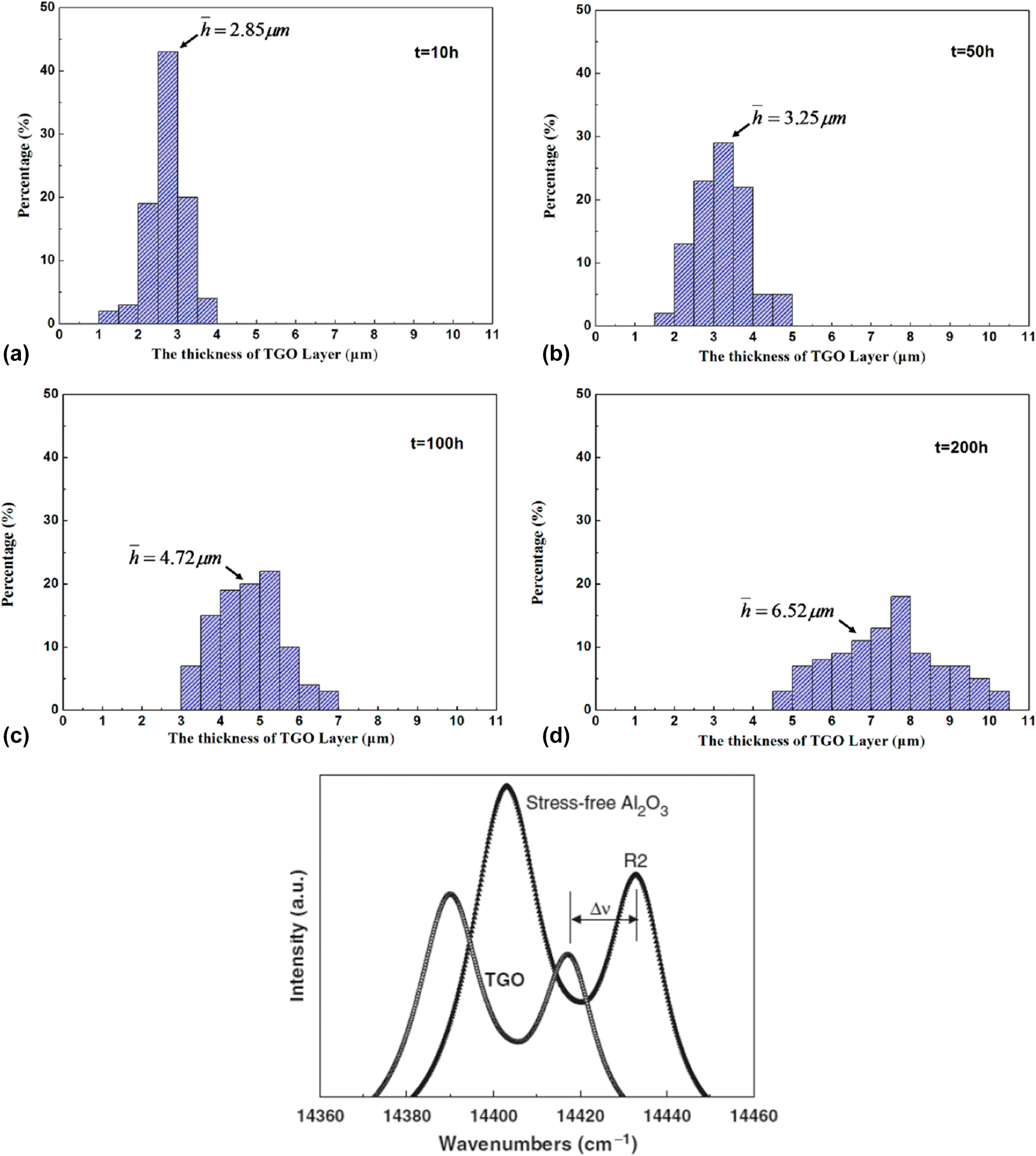Published online by Cambridge University Press: 23 April 2020

Thermal barrier coating is a high-temperature protective technology widely used in industrial gas turbines. However, the failure of coating peeling because of the generation of thermally grown oxide (TGO) at the interface during service hinders its further application. In this study, Raman spectroscopy and wedge indentation are used to determine the TGO residual stress and the interface energy release rate, respectively. The effect of TGO on the interfacial fracture toughness during the growth process was discussed. Raman spectroscopy test results show that the residual stress of TGO is about 0.5 GPa. Wedge indentation test results illustrate that high-temperature heat treatment could accelerate the interface degradation of thermal barrier coatings. Stress analysis and test research demonstrate that the microcracks induced by compressive stress of TGO will propagate with increasing heating time, ending with failure of barrier coatings.